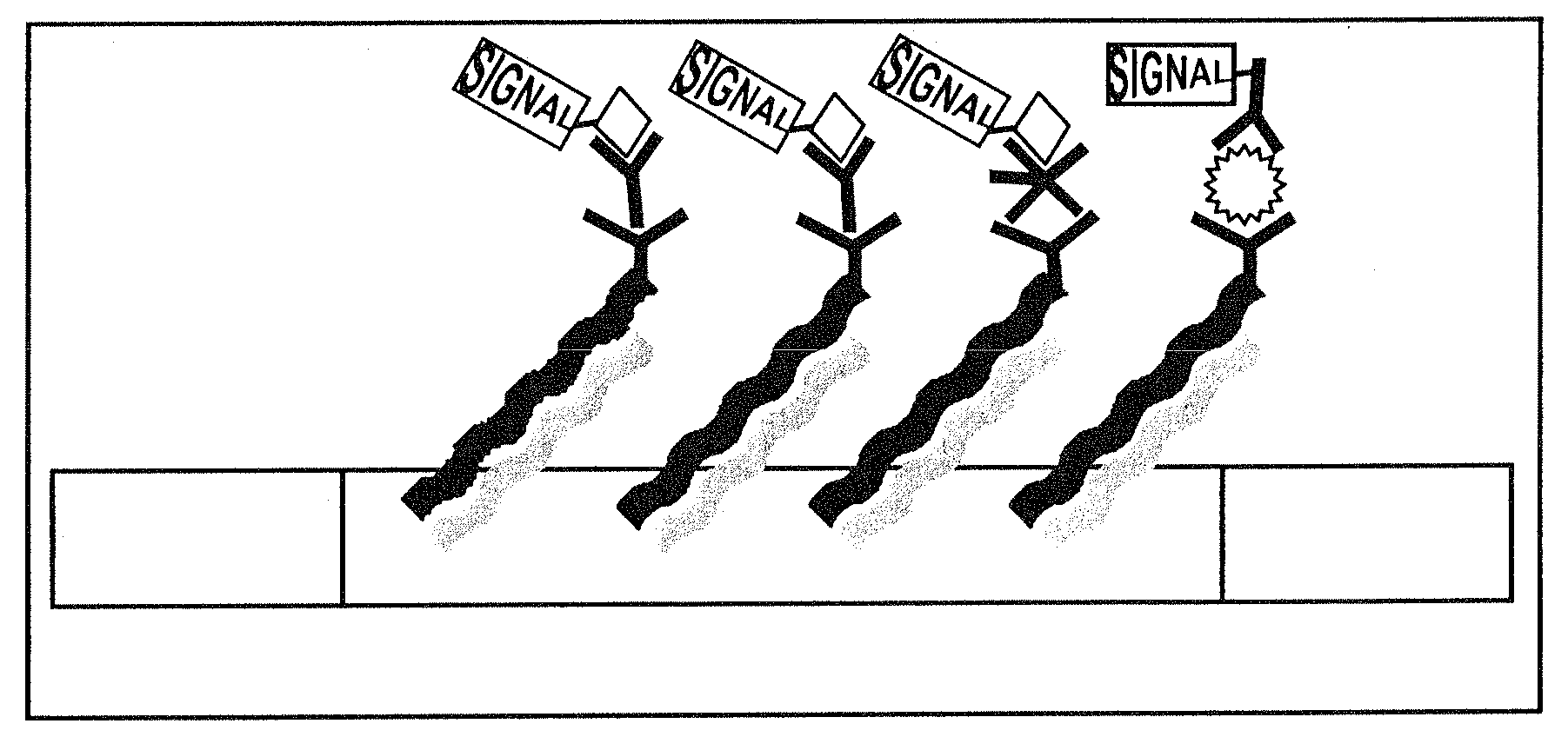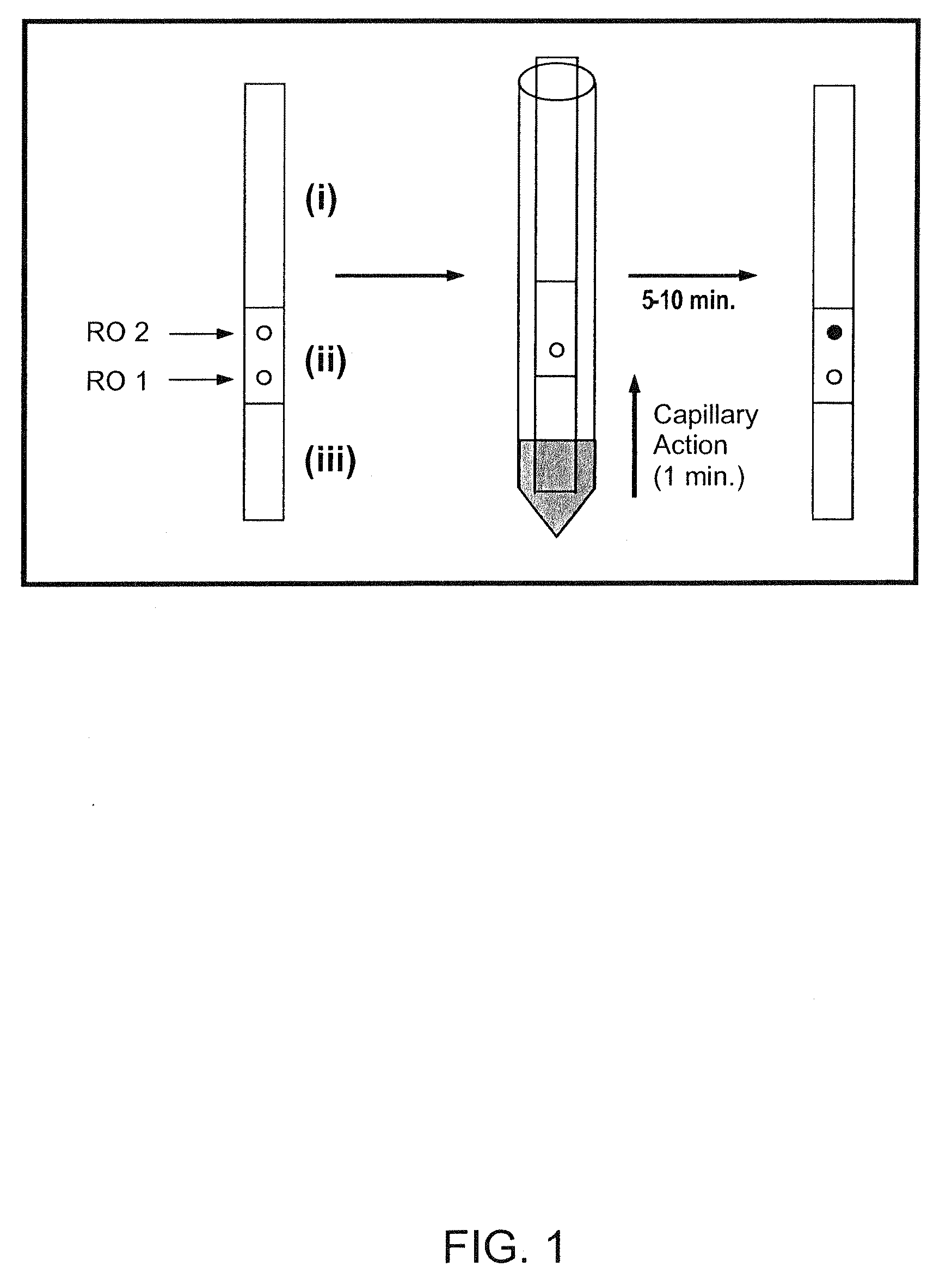Linear nucleic acid and sequence therefor
a nucleic acid and linear nucleic acid technology, applied in chemical libraries, combinational chemistry, sugar derivatives, etc., can solve the problems of limited applicability of capture systems, and inability to meet the needs of different conditions
Inactive Publication Date: 2008-10-16
PANBIO
View PDF7 Cites 3 Cited by
- Summary
- Abstract
- Description
- Claims
- Application Information
AI Technical Summary
Benefits of technology
[0017]The nucleic acid of the invention may be used concurrently, for the discrete capture or immobilisation of a multiplicity of ligands, analytes, or other species, analyte / anti-analyte and anti-analyte / analyte / reporter species complexes, without non-specific hybridisation, from a mixture in solution, on a support matrix at specified capture zones for each ligand, analyte, or other species or complex where the nucleotide sequences can be of any length and where the length of the nucleic acid is not subject to the formation of stable secondary structure or dimers which may reduce hybridisation efficiency.
[0079](c) Individual nucleic acids must have little or no stable secondary structure, such as hairpin loops, etc., or form stable dimers, particularly, at room temperature as this would significantly reduce the rate of hybridisation and hence the capture efficiency particularly with increasing length of the nucleic acid.
Problems solved by technology
It will be appreciated that these capture systems are limited in their applicability as irrelevant binding pairs to systems where multiple analytes, or multianalyte / anti-analyte complexes or multiple capture species need to be either captured or immobilised on a solid support discretely at specific identifiable capture zones for each of the analytes or analyte / anti-analyte complexes or capture species from a single mixture in solution.
A disadvantage of using more than one capture system is that different conditions are needed for optimal capture and discrimination for each capture system.
Also, various modifications and derivatisation may be required depending on the capture system and capture support medium used, which makes the process impracticable and complicated.
In particular, there is no disclosure of predicting a desired nucleotide sequence for an oligonucleotide tag or locus-specific tagged oligonucleotide.
However, the possibility of secondary structure and the formation of stable hairpin loops increases with increasing oligonucleotide length which decreases the efficiency of hybridisation making it necessary to use oligonucleotide modules to open up the secondary structure and increase the efficiency of hybridisation (Lundeberg, J., et al., 1998, Analytical Chemistry, 255, 195).
Method used
the structure of the environmentally friendly knitted fabric provided by the present invention; figure 2 Flow chart of the yarn wrapping machine for environmentally friendly knitted fabrics and storage devices; image 3 Is the parameter map of the yarn covering machine
View moreImage
Smart Image Click on the blue labels to locate them in the text.
Smart ImageViewing Examples
Examples
Experimental program
Comparison scheme
Effect test
example a
[0178]
5′ GG(TAACGC)4T 3′[SEQ ID NO 4]
example b
[0179]
5′ TT(CGCTTT)4CCCTT 3′[SEQ ID NO 5]
example c
[0180]
5′ (TATGGC)4TAT 3′[SEQ ID NO 6]
the structure of the environmentally friendly knitted fabric provided by the present invention; figure 2 Flow chart of the yarn wrapping machine for environmentally friendly knitted fabrics and storage devices; image 3 Is the parameter map of the yarn covering machine
Login to View More PUM
| Property | Measurement | Unit |
|---|---|---|
| width | aaaaa | aaaaa |
| structure | aaaaa | aaaaa |
| length | aaaaa | aaaaa |
Login to View More
Abstract
Nucleic acids and sequences therefor are disclosed that are characterized by a reduction or lack of internal secondary structure, are capable of hybridizing with a complementary nucleic acid and do not hybridise with non-complementary nucleic acids (eg. do not cross-hybridise or form dimers) under low stringency hybridisation conditions. In particular, the nucleotide sequences enable use of these nucleic acids, without reduction in target hybridisation efficiency with increasing nucleic acid length. The nucleic acids may be used with analyte capture systems, for example medical, veterinary and agricultural diagnostic applications. In particular, the nucleic acid may be used as irrelevant binding pairs in an analyte capture system, such as an array or lateral flow assay.
Description
[0001]This application is a divisional of U.S. Ser. No. 10 / 117,108 filed Apr. 8, 2002, which claims priority to U.S. provisional application Ser. No. 60 / 282,491 filed Apr. 10, 2001, both of which are hereby incorporated by reference in their entirety.FIELD OF THE INVENTION[0002]The present invention relates to linear nucleic acids, for example oligonucleotides, having nucleotide sequences enabling use of these nucleic acids, without reduction in target hybridisation efficiency with increasing nucleic acid length. The nucleic acids may be used for the discriminatory and concurrent cross-linking by hybridisation or hybridisation capture, of a multiplicity of species in solution, at a mixed solution-solid phase interface, at a solid-solid phase interface, or combination thereof under non-stringent or relaxed hybridisation conditions. The present invention is widely useful for diagnostic biomedical applications in the human, veterinary, agricultural and food sciences, as well as applica...
Claims
the structure of the environmentally friendly knitted fabric provided by the present invention; figure 2 Flow chart of the yarn wrapping machine for environmentally friendly knitted fabrics and storage devices; image 3 Is the parameter map of the yarn covering machine
Login to View More Application Information
Patent Timeline
 Login to View More
Login to View More Patent Type & Authority Applications(United States)
IPC IPC(8): C40B30/04C07H21/00C07H21/04C12N15/11C12Q1/68C12Q1/6832C12Q1/6837C12Q1/6876G01N33/50
CPCC12Q1/6832C12Q1/6837C12Q1/6876
Inventor KACHAB, EDWARD HANNABARNETT, GRAEME ROSS
Owner PANBIO
Features
- R&D
- Intellectual Property
- Life Sciences
- Materials
- Tech Scout
Why Patsnap Eureka
- Unparalleled Data Quality
- Higher Quality Content
- 60% Fewer Hallucinations
Social media
Patsnap Eureka Blog
Learn More Browse by: Latest US Patents, China's latest patents, Technical Efficacy Thesaurus, Application Domain, Technology Topic, Popular Technical Reports.
© 2025 PatSnap. All rights reserved.Legal|Privacy policy|Modern Slavery Act Transparency Statement|Sitemap|About US| Contact US: help@patsnap.com



